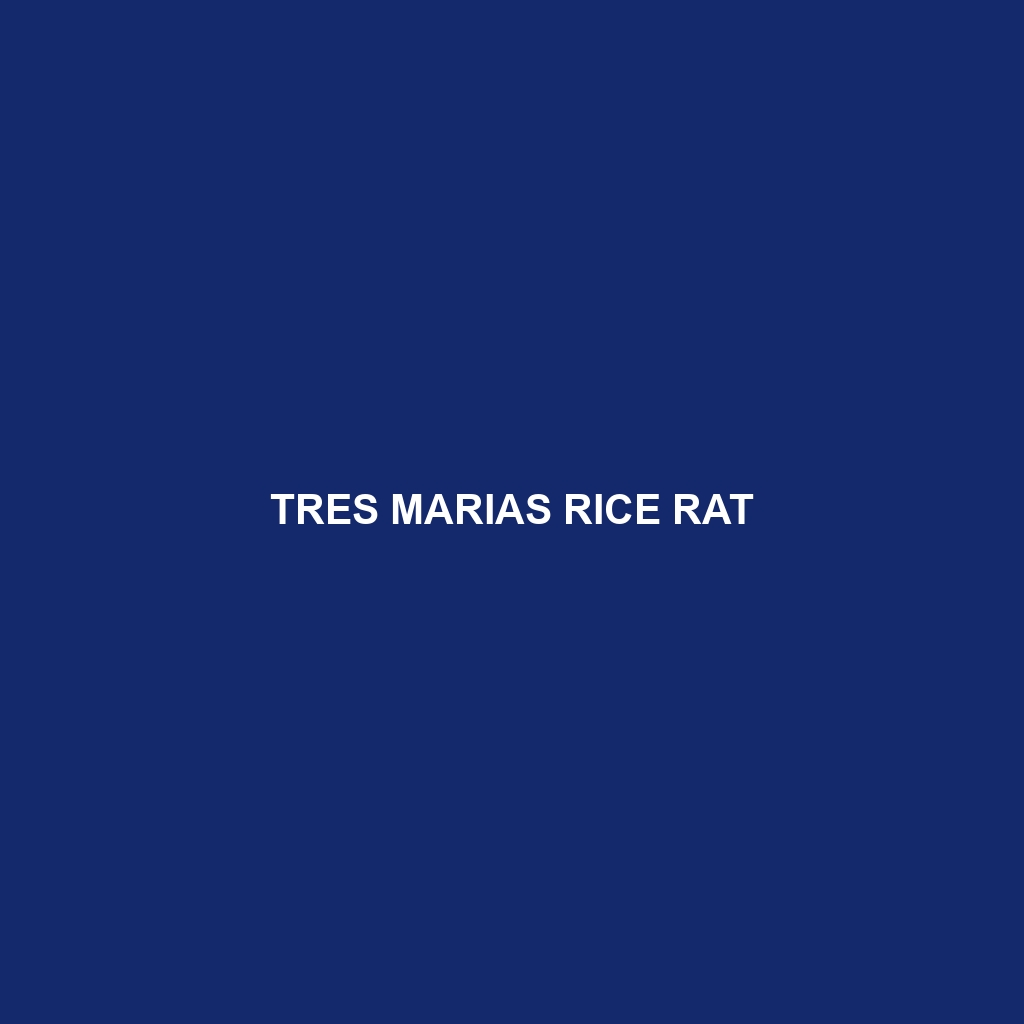Common Name: Tres Marias Rice Rat
Scientific Name: Oryzomys tatei
Habitat:
The Tres Marias Rice Rat is primarily found in the Tres Marías Islands, located off the western coast of Mexico. This species thrives in tropical and subtropical forests, often inhabiting humid regions near freshwater sources such as streams and rivers. Its preference for dense vegetation and grassy areas makes it well-adapted to the island’s unique ecosystem.
Physical Characteristics:
The Tres Marias Rice Rat is a medium-sized rodent that typically measures between 20 to 30 centimeters in body length, excluding its tail which can be equally long. Its fur is generally a mixture of brown and gray, providing camouflage within its natural habitat. Distinctive features include large ears, a pointed snout, and a slender body, making it a unique specimen among other rodents. This species also has well-developed hind limbs, facilitating agile movement through its environment.
Behavior:
This species is predominantly nocturnal, showcasing its activity during the night when it is most likely to forage for food and avoid predators. The Tres Marias Rice Rat is known for its excellent climbing abilities and often constructs nests within dense foliage. Social behavior varies; while some individuals may live solitarily, others form small groups, especially during breeding seasons. Their vocalizations and scent markings play crucial roles in communication with other members of the species.
Diet:
The Tres Marias Rice Rat has an omnivorous diet that primarily consists of seeds, fruits, and aquatic plants. It may also consume insects and small invertebrates, which provides a rich source of protein. Its feeding habits make it an integral part of seed dispersal within its island habitat, aiding in plant growth and ecological balance.
Reproduction:
This species typically breeds during the warmer months, with a peak in activity noticed from April to September. Females usually give birth to litters of 3 to 7 young after a gestation period of approximately 25 days. The young are born hairless and initial care is provided by the mother, who weans them after a few weeks. This reproductive strategy helps maintain their population within the limited habitat of the Tres Marías Islands.
Conservation Status:
The Tres Marias Rice Rat is currently listed as Endangered due to habitat destruction and competition with invasive species. Conservation efforts are essential to safeguard this unique rodent and its habitat, emphasizing the need for habitat protection and management strategies.
Interesting Facts:
One fascinating aspect of the Tres Marias Rice Rat is its ability to adapt to varying environmental conditions. Unlike many other rodents, this species is known to thrive specifically in island habitats, showcasing unique adaptations that make it a subject of interest for biologists and conservationists. Additionally, its lesser-known vocalizations contribute to its mystery, representing an intriguing area for further research.
Role in Ecosystem:
The Tres Marias Rice Rat plays a crucial role in its ecosystem as both prey and seed dispenser. Serving as a food source for various predators, including birds of prey and snakes, it contributes to the food web. Furthermore, its feeding habits promote the growth of native plant species, thereby supporting the overall biodiversity of the Tres Marías Islands.
